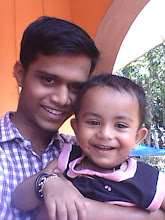PRINCIPLES OF DIRECTION
Principles
of Direction
•
Principle of harmony of objectives
•
Principle of unity of command
•
Principle of direct supervision
•
Appropriate techniques
•
Managerial communications
•
Informal organization
•
Principle of maximum individual
contribution
•
Use of motivation techniques
Principle of follow-up
Principle
of harmony of objectives
•
Direction function must resolve the
conflict between individual goals and organizational objectives.
•
A manager must try to bring harmony
and fusion between individual employees, groups, and organization.
A
manager should foster the sense of belonging to the organization among the
individuals so that they can identify themselves with the company
Principle
of direct supervision
•
The concerned manager should have
personal touch with the subordinates and
involve in face-to-face communication regarding the work related matters.
•
He should develop informal
relationships with his employees.
Direct subordination makes the
employees happy and boosts their morale
Appropriate
techniques
The
technique used for direction should be appropriate to the people, the task and
the situation
Managerial
Communications
•
Two-way communication is an
important part of direction.
•
The manager should explain the
policies and practices to subordinates and the results expected of them.
•
Proper feedback should come through
from upward communication
•
The manager should encourage the
subordinates to express their views freely and fearlessly
Informal
organization
•
Managers should make use of
informal groups to supplement, support and strengthen the formal structure.
•
The cooperation of informal leaders
will go a long way in putting everything in order
Principle
of maximum individual contribution
•
Performance improves greatly when
every employee gives his best to the organization
•
The manager should therefore
inspire the subordinates in such a way that they contribute their maximum while
realizing organizational objectives
Use
of motivation techniques
•
A manager should develop selective
motivation techniques such as money, pay, status, job enrichment etc so that
the productivity and the quality of the commodity produced increases
•
Motivation always leads to higher
job satisfaction
Principle
of Follow-up
•
Successful direction is a never
ending process
•
It involves constant and continuous
supervision, coaching, advice, counseling and helping the employees in their
respective activities
Direction
is also concerned with ensuring that people do what they are told to do. This
requires continuous feedback
Elements
of Direction
•
Issuing orders and instructions to
subordinates
•
Follow-up instructions
•
Standard practice and
indoctrination
•
Explanations
•
Consultative direction





0 comments:
Post a Comment